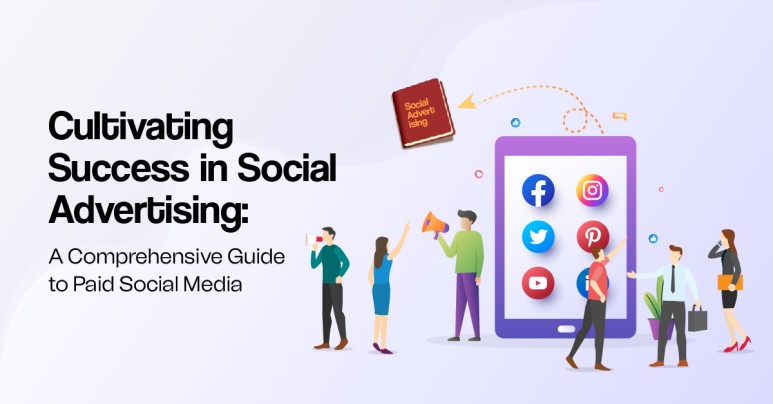In the present digital era, social media has firmly integrated itself into our daily lives. From connecting with friends and family to discovering new products and services, platforms like Facebook, Instagram, Twitter, and LinkedIn have transformed the way we interact with the world. This transformation extends to marketing and advertising as well, with paid social media advertising becoming a powerful tool for businesses to reach their target audience. In this blog, we'll provide you with a comprehensive guide to paid social media advertising success, complete with real-world examples.
Gaining Insight into the Potential of Paid Social Media Advertising
Paid social media advertising involves promoting your brand, products, or services through paid placements on social media platforms. The potential reach and targeting capabilities of these platforms make them a goldmine for businesses looking to expand their online presence and engage with their audience effectively.
Setting Clear Objectives
Before diving into paid social media advertising, it's essential to define your objectives. What do you want to achieve with your campaigns? Are you aiming to enhance brand recognition, channel more visitors to your website, generate potential leads, or elevate your sales? Setting clear goals will help you tailor your strategies to achieve the desired outcomes.
Example: Boosting Brand Awareness
Consider the scenario where you are about to launch a brand-new collection of eco-conscious skincare products. Your goal is to increase brand awareness among environmentally conscious consumers. Paid social media advertising allows you to target users who have shown an interest in eco-friendly products. By creating engaging ad content that highlights the sustainability of your skincare line, you can effectively raise brand awareness and pique the interest of your target audience.
Choosing the Right Platforms
Not all social media platforms are created equal, and each has its unique strengths and user demographics. Understanding your audience is key to selecting the right platforms for your advertising efforts.
- Facebook: With its vast user base and comprehensive targeting options, Facebook is ideal for reaching a wide range of audiences.
- Instagram: If your brand relies heavily on visuals, Instagram's highly visual nature makes it a great choice.
- LinkedIn: For B2B businesses and professional services, LinkedIn offers a platform for reaching decision-makers and professionals.
- Twitter: Twitter is suitable for real-time engagement and trending topics, making it ideal for timely promotions and announcements.
Creating Compelling Ad Content
Your ad content should be attention-grabbing, relevant, and tailored to each platform. Visual elements, such as images and videos, play a significant role in capturing the audience's attention.
Example: Instagram Story Ads
For your eco-friendly skincare line, you decide to run Instagram Story Ads. These ads are full-screen and visually engaging, making them perfect for showcasing your products in action. You create short video clips highlighting the natural ingredients and sustainable packaging of your skincare line, effectively conveying your brand's commitment to the environment.
Leveraging Targeting Options
One of the standout advantages of paid social media advertising is the ability to target specific demographics, interests, and behaviors. Use these targeting options to reach the audience most likely to engage with your content and convert into customers.
Example: Facebook Custom Audiences
To reach users who are already familiar with your brand, you can create a Custom Audience on Facebook. This audience consists of individuals who have visited your website or interacted with your previous ads. You can then run targeted ads featuring your new eco-friendly skincare line to this warm audience, increasing the likelihood of conversions.
Monitoring and Optimization
Paid social media advertising is an ongoing process. Continuously monitor your campaigns' performance, track key metrics like click-through rates and conversion rates, and adjust your strategies accordingly. A/B testing different ad variations can help you refine your approach and maximize results.
Example: A/B Testing Ad Copy
In your Facebook ad campaign, you decide to test two different ad copies: one focusing on the environmental benefits of your skincare line and the other emphasizing its effectiveness. After running both versions, you discover that the environmental angle resonates more with your audience, and you allocate more budget to that ad.
Conclusion: Driving Success Through Paid Social Media Advertising
Paid social media advertising offers a dynamic and versatile platform for businesses to connect with their target audience, achieve their marketing objectives, and drive tangible results. By understanding your audience, setting clear goals, creating compelling ad content, and continuously optimizing your campaigns, you can harness the power of social media to elevate your brand and achieve advertising success.
Remember that each business and campaign is unique, so be prepared to adapt and refine your strategies as you learn more about what resonates with your audience. With the right approach, paid social media advertising can be a game-changer for your brand's digital marketing efforts.





